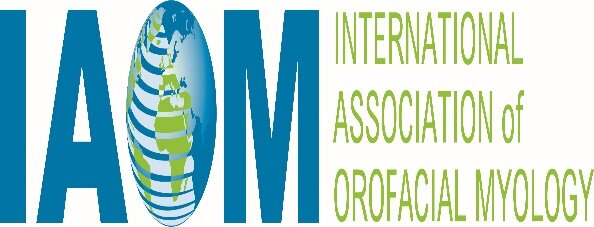
Orofacial Myofunctional Therapy
What are orofacial myofunctional disorders?
Orofacial myofunctional disorders are atypical, adaptive patterns that occur when the muscles of the face, neck, and mouth don’t function normally. If these adaptive movements happen regularly, they can have a variety of effects.
Signs of orofacial myofunctional disorders include (but are not limited to):
-A routine habit of resting with the lips apart
-Mouth breathing
-A frontal or lateral lisp
-Improper chewing and swallowing (For example: only chewing on one side, using a vertical “munch” chewing pattern instead of a rotary chewing pattern, decreased or no tongue side-to-side movement while chewing, not having good control of the food in the mouth while chewing, pushing the tongue against the front teeth while chewing or swallowing)
-Coughing/choking frequently while swallowing
-Needing a lot of liquids while eating
-A forward resting posture of the tongue between or against the front teeth
-A low resting posture of the tongue on the floor of the mouth
-Tongue thrusting against the teeth at rest or while swallowing
-Thumb and finger sucking habits
-Other harmful oral habits (like nail biting or hair chewing)
Related issues that often co-occur with orofacial myofunctional disorders:
-Malocclusion (improper alignment of the teeth)
-Sleep difficulties (like sleep apnea, bed-wetting, upper airway resistance syndrome, or restless sleep, among others). In children, these sleep difficulties can lead to challenges with attention, behavior, and development.
-Orthodontic relapse (teeth getting crooked again after braces come off)
-TMJ dysfunction
-Forward head posture; poor body posture (“slumping” or “hunching”)
-Changes associated with abnormal jaw growth and position
-Allergies
-Nasal obstruction (like a deviated septum or enlarged nasal turbinates)
-Upper airway obstruction (like enlarged tonsils and/or adenoids)
-Tethered oral tissue (such as a tongue or lip tie)
Read more about orofacial myofunctional disorders here!
What can orofacial myofunctional therapy accomplish?
Our orofacial myofunctional therapy program involves a 4-step process to help a person retrain these adaptive patterns of muscle function to create and maintain a healthy and more efficient system.
Treatment goals may include (but are not limited to):
-Establishing nasal breathing
-Normalizing tongue and lip resting postures
-Improving strength and coordination of the oral musculature
-Pre- and post- frenectomy care addressing neuromuscular re-education and improving muscle function
-Eliminating improper chewing and swallowing
-Using balanced and efficient chewing and swallowing
Treatment may also address the elimination of harmful oral habits including:
-Prolonged pacifier use
-Thumb and/or finger sucking
-Fingernail, cheek, or lip biting
-Tongue sucking
-Clenching or grinding of the teeth
When should therapy begin?
Therapy for orofacial myofunctional disorders can begin at different ages.
-Children as young as 4 years of age can benefit from an evaluation to determine if factors such as an inability to breathe nasally consistently or a tongue tie would require intervention and would allow the clinician to make appropriate referrals to professionals for remediation.
-5 year-olds are at an ideal time to begin a program to help eliminate harmful sucking habits.
-6 and 7 year-olds are good candidates to begin an orofacial myofunctional therapy program.
-Teens and adults of all ages are also able to achieve successful, long-term results.
How do I get started with orofacial myofunctional therapy?
If you suspect you or your child have an orofacial myofunctional disorder, the first step is to call and schedule an evaluation. The evaluation will include a detailed medical history, assessment of orofacial structure and function during speech and feeding tasks, and may include an articulation assessment. Our patients leave their evaluations with a whole new understanding of how their facial structures and muscles work together, and we often hear that it is the most eye-opening, thorough evaluation they have ever had!
Success with an orofacial myofunctional therapy program requires a team approach: the orofacial myofunctional therapist, related professionals (including dentists, ENTs, pediatricians, sleep physicians, etc.), the patient, and the family must all collaborate for the best possible outcome. Following the exercise and referral recommendations of your therapist and related professionals will help ensure that you or your child progress through the program and achieve your goals as efficiently as possible.
Are you ready to get on the pathway to better breathing, sleeping, eating, and drinking? Give us a call!
The above information was gathered from the website of the International Association of Orofacial Myology (IAOM). For more information regarding OMDs and Orofacial Myofunctional Therapy, please visit their website: https://www.iaom.com/





